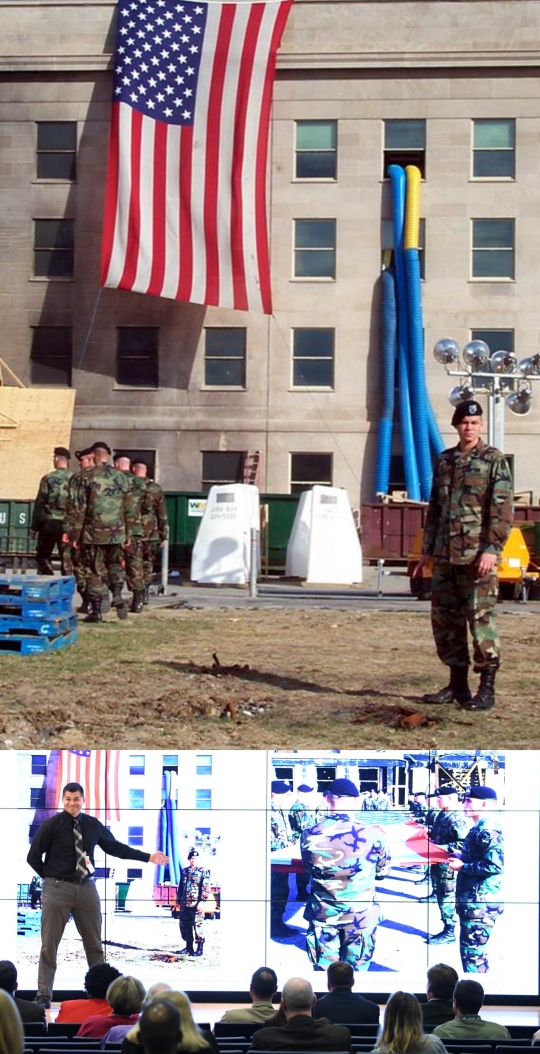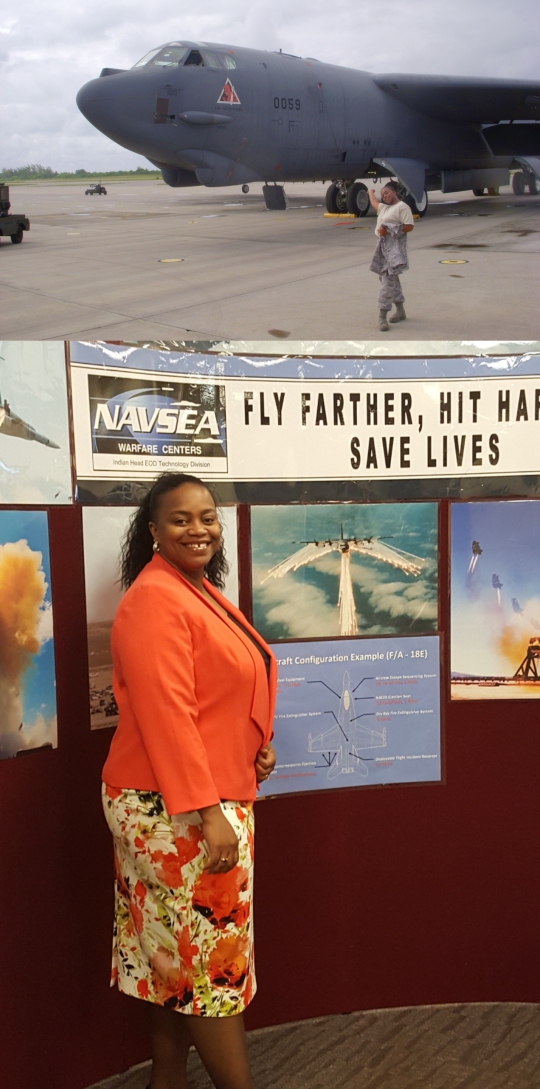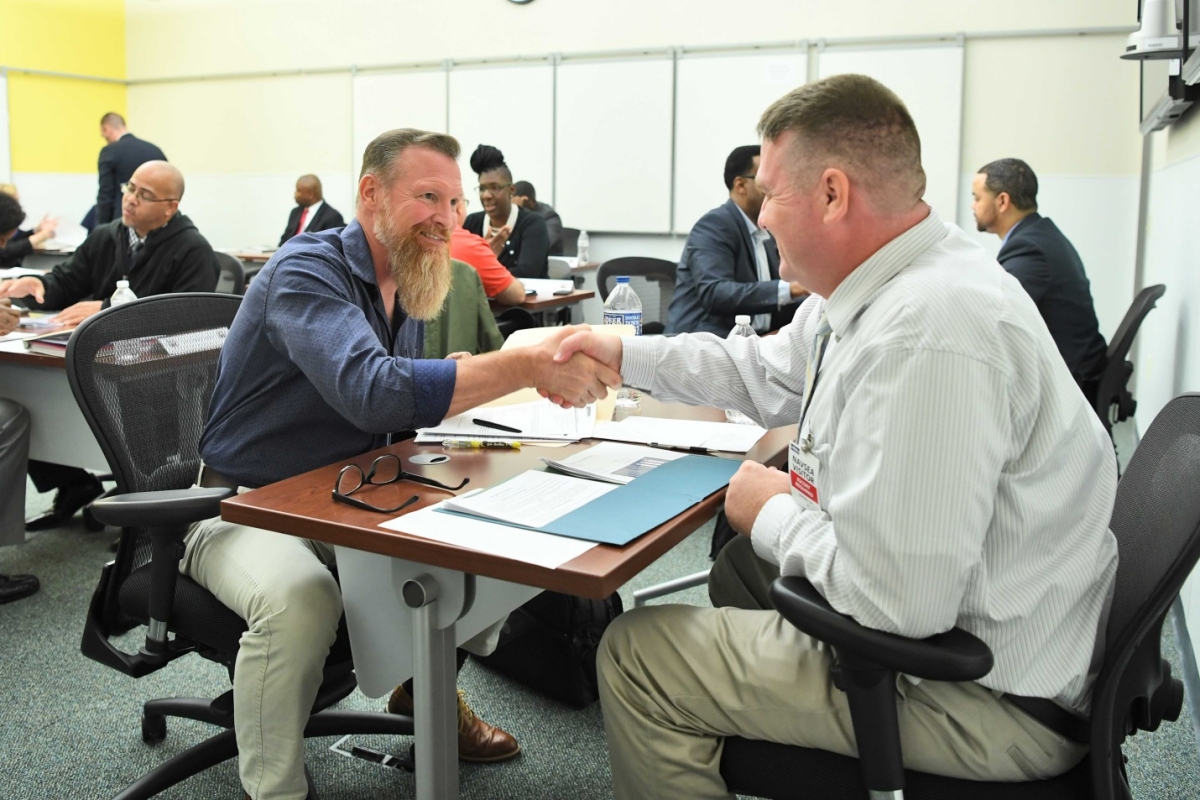Supporting the country's military heroes and assisting them in continuing to serve their nation in civilian life is part of the Department of the Navy (DoN) Veteran and Wounded Warrior Hiring and Support Initiative which launched in 2010. With the Naval Systems Commands and the Office of Civilian Human Resources leading the effort, the Navy hired 10,609 veterans, 3,433 of whom are Wounded Warriors—combat veterans with disabilities of 30 percent or more—in 2016.
"These men and women are some of the hardest-working, highest-skilled and best-trained people in our country," said Warfare Center Executive Director Donald F. McCormack. "They are also brave, selfless and unquestionably part of NAVSEA's effort to have a workforce that is second to none."
The initiative, which supports the "People" line of effort in NAVSEA's Campaign Plan to Expand the Advantage, matches veterans with service disabilities to employment opportunities in NAVSEA's industrial, scientific, contracting and administrative fields.
In addition to holding reverse-style career fairs—which highlight the skills, talents and abilities of jobseekers, rather than those doing the hiring—including one at the Washington Navy Yard last month, NAVSEA co-sponsors national events such as the DoN Veteran and Wounded Warrior Hiring and Support Summit in May in Seattle. The VWWPO also assists veteran employees through the Mentor, Assist, Train to Excel and Support (MATES) program.
"Having personally met with hundreds of transitioning service members and veterans as they embark on civilian life, witnessing first-hand their courage and motivating attitude, makes it easy to be passionate in my career," said Caitlin Williams, NAVSEA's Veteran and Wounded Warrior Program Manager. "Former NAVSEA Commander, Vice Adm. (Kevin) McCoy once said, 'Who better to serve the warfighter than the warfighter himself?' The NAVSEA Veteran and Wounded Warrior Program Office wouldn't be successful without the support from leadership and the field activities that comprise the enterprise."
NAVSEA, the Navy's largest systems command, employs more than 74,000 people at 33 field activities across the country and overseas. There are hundreds of civilian occupations for Wounded Warriors across the enterprise; in this issue, timed to reflect the recent observance of Veterans Day, Soundings highlights several at the Warfare Centers.
“It has truly filled a gap in my heart that I had since the day they told me I would no longer be able to be in the military due to my injuries.” —Anthony Rico
Anthony Rico, NSWC Dahlgren Division
From Army soldier to Lead Logistics Analyst for the Precision Guided Weapons section of the Battle Management System
 TOP: Army soldier Anthony Rico, right, at the Pentagon in the aftermath of Sept. 11, 2001, terror attacks.
TOP: Army soldier Anthony Rico, right, at the Pentagon in the aftermath of Sept. 11, 2001, terror attacks.
BOTTOM: Anthony Rico, Lead Logistics Analyst for the Precision Guided Weapons section of the Battle Management System at NSWC Dahlgren Division, delivers remarks during NAVSEA's National Disability Employment Awareness Month event sponsored by the NAVSEA Individuals with Disabilities Employee Resource Group on Oct. 24 in the Humphreys Building auditorium at the Washington Navy Yard.
When Anthony Rico made the transition from military to civilian, "It wasn't about the pay, it was about job security and a solid future for my family," he said. "Being a contractor or government employee was always a way to give back to my fellow warfighters, who I missed being a part of. It has truly filled a gap in my heart that I had since the day they told me I would no longer be able to be in the military due to my injuries."
As Lead Logistics Analyst for the Precision Guided Weapons (PGW) section of Battle Management System (BMS) at NSWC Dahlgren Division, he is responsible for the overall logistics and maintenance support for BMS PGW equipment, which is being used on the Harvest Hawk, Harvest Hawk+, AC-J (Ghost Rider), AC-W (Stinger II), Patrol Coastal and Littoral Combat Ships (LCS), as well as other developmental platforms and projects.
Rico came to NSWC Dahlgren Division by way of a reverse-style career fair hosted by NAVSEA, which he learned about from a representative of the Paralyzed Veterans of America.
"I had no clue what a reverse job fair was, but I was more than willing to attend," Rico said. "Of course, I was already passed the registration date, but we contacted Caitlin Williams and her team and they were able to get me into the event. Thanks to Caitlin and her team, my dream of becoming a government employee was now a reality."
Rico's infantry background has served him well in his position at NSWC Dahlgren Division.
"Quite often in the service, you are thrust into situations where you don't always have the right tool or person to complete a mission or job. This happens in a normal office environment as well, and veterans are quite creative and are able to come up with various ways to accomplish the objective," Rico said. "The veteran brings the 'Yes, but' mentality, rather than the 'No it can't' mentality. 'This is how we have always done it' doesn't necessarily mean it's the correct or most efficient way of doing business."
Veterans can provide first-hand knowledge to a program office and help understand not only how a unit works and operates, but how warfighters use the tools within their field of work.
"Our mission as a Warfare Center is to provide the most effective and safest systems possible to the warfighter," said Robert Snodgrass, Weapon Control Hardware Engineering and Test Branch Head and Rico's supervisor. "The veterans and Wounded Warriors on the team not only provide the perspective and operational insight of the warfighter, but they serve as a constant reminder of why we do what we do … they inspire us to ensure we get it right."
Gary Shearer, Lead Hardware and Embedded Software Architect and Chief Engineer for the Weapon Control Hardware Engineering and Test Branch, said the passion Rico has to serve the warfighter motivates those around him.
"I see the pride and I see the dedication he has to our mission, for instance, direct support to boots on the ground with our weapon systems," he said. "It helps remind me personally, of why I am really doing the job I am doing, and why it is so important. We want all the 'Ricos' to come home safe. He helps to inspire my team because we know that guys and gals just like our Rico need the absolute best systems we can provide. So it is not that he is just doing a job and happens to be a co-worker, his impact runs much deeper for us."
“A professional and culturally diverse work environment is what I am used to, especially having a military background, and that is what you get here.” —Stephanie Hueston
Stephanie Hueston, NSWC Indian Head EOD Technology Division
From Air Force Master Sergeant to Joint Strike Fighter Integrated Product Team Deputy, Logistics Management Specialist
 TOP: Air Force Master Sergeant Stephanie Hueston poses with a B-52 aircraft in British Indian Ocean Territory after finishing mission paperwork for the aircraft's departure in 2009.
TOP: Air Force Master Sergeant Stephanie Hueston poses with a B-52 aircraft in British Indian Ocean Territory after finishing mission paperwork for the aircraft's departure in 2009.
BOTTOM: Stephanie Hueston is now a Joint Strike Fighter Integrated Product Team Deputy, Logistics Management Specialist, at NSWC Indian Head EOD Technology Division.
For Stephanie Hueston, joining the NAVSEA team has been the most rewarding decision she has made since retiring from the Air Force in 2012. She served 21 years and nine months as an Air Force Active Duty Enlisted Logistics, Contingency War Planner.
After eight contingency deployments, including two to Iraq, upon her retirement, Hueston said she wanted to continue to serve and contribute to the warfighter, specifically in the air operations world, which her current position at NSWC Indian Head EOD Technology Division allows.
"Working for the Cartridge Actuated Device (CAD)/Propellant Actuator Device (PAD) Division at NSWC Indian Head Explosive Ordnance Disposal Technology Division, managing the Joint Strike Fighter Ejection Seat devices, has brought me a sense of fulfillment and accomplishment," Hueston said. "A professional and culturally diverse work environment is what I am used to, especially having a military background, and that is what you get here at Indian Head: a welcoming, accepting and supportive home. Score!"
Hueston learned about the NAVSEA VWWPO from one of NAVSEA's Human Resources Specialists and received assistance in making the transition along the way. "I work with many great people, but there is one person in particular who has made my start here easier, and that person is Mr. John Constantine; he took on the responsibility of mentor and guided me through the NAVSEA indoctrination process and helped make my transition from military to civilian life as painless as possible," she said.
"When Stephanie came on board earlier this year, she immediately went to task of defining rules of engagement for the differing tiers of program office review," said Constantine, F-35 CAD/PAD E24 Engineering Department Transition Integrated Product Team Lead. "I attest her ability to work the issues she was given to her years of military experience, which taught her how to address problems or concerns head on, and not let these problems or issues linger.
"By hiring Stephanie, we have allowed her expertise and training to be used again, this time for the Warfare Centers, and mitigating months, if not years, of training a typical new employee would require," Constantine said. "Not only has this led to cost and schedule savings, but as also enhanced the position of the program to move forward at a quicker pace than expected."
It is Hueston's job to ensure the ejection seat devices are available and service-ready when needed. "Our job at Indian Head—like many other jobs—is vital to the success of Air Force, Navy and Marine pilots' mission success and survival," she said. "'Loggies,' like me, are part of a team of people who work daily to ensure the successful function of Air Force, Navy and Marine aircraft ejection seats."
One recent illustration that stands out for Hueston was when her division director thanked her and her team for a job well done after learning that an Air Force pilot had safely ejected from his aircraft: "The devices we engineer, test and manage, worked!"
"Knowing when I do my job correctly contributes directly to our country's national defense makes me proud to be a part of the NAVSEA team," Hueston said.
LEARN MORE:
Warfare Center Division Wounded Warrior Points of Contact:
• NSWC Dahlgren Division/CDSA Dam Neck: Ally Regan, margaret.regan@navy.mil (new POC Shane Humphreys effective Nov. 27)
• NSWC Indian Head EOD Technology Division: Lisa M. Robey, lisa.robey@navy.mil
Visit the NAVSEA's Veterans and Wounded Warrior Program Office website: www.navsea.navy.mil/Career-Opportunities/Veteran-and-Wounded-Warrior-Program-Office/



